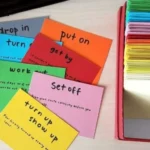In the modern digital era, self-paced learning has become a cornerstone of personal and professional growth. The availability of free online courses has democratized education, making it accessible to anyone with an internet connection.
However, with a plethora of resources available, creating a customized learning plan can be daunting. This guide will walk you through the step-by-step process of building a tailored learning plan using free courses, ensuring your efforts align with your personal and professional goals.
Why Build a Customized Learning Plan?
Before diving into the steps, it’s essential to understand why creating a personalized learning plan is beneficial:
- Focus on Specific Goals: A tailored plan ensures you stay on track with your career or personal development objectives.
- Efficient Use of Time: By focusing on relevant courses, you avoid wasting time on irrelevant material.
- Cost-Effective Learning: Free courses offer high-quality content without breaking the bank.
- Improved Retention: A structured approach makes it easier to retain and apply knowledge.
Steps to Build a Customized Learning Plan

Identify Your Learning Objectives
Your first task is to determine what you want to achieve. Ask yourself:
- What skills or knowledge do I need for my career or personal growth?
- What challenges am I facing that learning can solve?
- Are there certifications or competencies required for my goals?
Assess Your Learning Style and Preferences
Understanding your preferred learning style can enhance your experience. Consider:
- Visual Learners: Look for video-based courses with charts and infographics.
- Auditory Learners: Opt for podcast-style or audio-friendly lessons.
- Kinesthetic Learners: Seek interactive courses with projects or hands-on activities.
Research Free Course Platforms
There are numerous platforms offering free courses across various subjects. Here are some popular options:
| Platform | Specialization | Features | Certification |
|---|---|---|---|
| Coursera | Business, Technology, Arts | University-affiliated content | Paid certificate |
| edX | Engineering, Data Science | Expert instructors from top universities | Paid certificate |
| Khan Academy | Math, Science, Humanities | Beginner-friendly | No certificates |
| Udemy | Diverse fields, creative skills | Peer-reviewed courses | Paid certificate |
| Codecademy | Programming, Data Analytics | Interactive code editors | Paid certificate |
| LinkedIn Learning | Business, Technology, Soft Skills | Integration with professional networks | Paid certificate |
Evaluate and Select Courses
Not all courses are created equal. Use the following criteria to evaluate courses:
- Relevance to Your Goals: Does the syllabus align with your learning objectives?
- Course Level: Is it suitable for beginners, intermediate, or advanced learners?
- Instructor Expertise: Check credentials and reviews of the instructor.
- Reviews and Ratings: Look for feedback from past students to assess quality.
- Time Commitment: Ensure the duration fits your schedule.
Organize Your Learning Plan
Once you’ve selected courses, structure them into a timeline.
| Time Frame | Course/Skill | Platform | Goal |
|---|---|---|---|
| Week 1-2 | Introduction to Python | Codecademy | Learn basics of coding |
| Week 3-4 | Data Analysis with Excel | Coursera | Analyze data for business insights |
| Week 5-6 | Effective Communication | LinkedIn Learning | Improve workplace collaboration |
Enhance Your Learning Plan with Additional Resources
To make your learning plan robust, include complementary resources such as:
- YouTube Tutorials: Supplement complex concepts with visual explanations.
- E-Books and Articles: Dive deeper into topics with free downloadable materials.
- Online Communities: Join forums like Reddit, Stack Overflow, or LinkedIn groups to engage with fellow learners.
Key Topics to Explore

When designing your learning plan, consider incorporating a mix of technical, creative, and soft skills:
Technical Skills
- Data Science and Machine Learning: Gain expertise in Python, R, and AI tools.
- Web Development: Learn HTML, CSS, JavaScript, and frameworks like React.
- Cybersecurity: Explore ethical hacking, network security, and risk management.
Creative Skills
- Graphic Design: Master tools like Adobe Photoshop and Canva.
- Content Writing: Enhance your storytelling and SEO skills.
- Video Editing: Learn software like Premiere Pro or Final Cut Pro.
Soft Skills
- Leadership and Team Management: Develop strategies for effective leadership.
- Public Speaking: Improve your communication and presentation skills.
- Time Management: Learn productivity hacks and tools.
Track and Reflect on Your Progress
Monitoring progress is essential for maintaining momentum. Use these strategies:
- Weekly Reviews: Reflect on what you’ve learned and identify gaps.
- Practical Application: Apply skills through projects or real-life scenarios.
- Feedback Mechanisms: Seek input from peers or mentors to improve.
Benefits of Using Free Courses for Customized Learning
| Benefit | Description |
|---|---|
| Accessibility | Learn anytime, anywhere with just an internet connection. |
| Diverse Topics | Explore subjects ranging from business to creative arts. |
| No Financial Barrier | Build skills without incurring student debt. |
| Flexibility | Learn at your own pace, fitting courses around your schedule. |
| Immediate Application | Apply acquired skills in real-world scenarios without delay. |
Challenges and How to Overcome Them

While free courses offer many advantages, they also come with challenges:
| Challenge | Solution |
|---|---|
| Overwhelming Choices | Stick to your goals and evaluate courses thoroughly. |
| Lack of Certification | Pair free courses with low-cost certification options. |
| Staying Motivated | Set milestones, join learning groups, or reward yourself for achievements. |
Success Stories: How Free Courses Transformed Lives
Real-world examples demonstrate the power of self-paced learning:
- Jane Doe: A graphic designer who switched careers into UX design using free courses on Coursera and YouTube.
- John Smith: A data analyst who upskilled into machine learning using Codecademy and edX.
- Alice Wong: A stay-at-home parent who learned coding and now freelances as a web developer.
Future Trends in Free Learning
The world of free learning is constantly evolving. Some trends to watch include:
- Micro-Credentials: Bite-sized, stackable certifications.
- Gamified Learning: Courses incorporating interactive and game-like elements.
- AI-Powered Personalization: Adaptive learning platforms tailoring content to individual needs.
ALSO READ: How to Find High-Quality Free Online Courses in Any Subject
Final Thoughts
Building a customized learning plan with free courses is a transformative step toward achieving your personal and professional aspirations.
By identifying your goals, leveraging the right platforms, and staying committed, you can unlock endless possibilities for growth.







